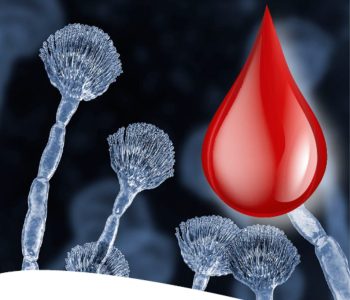Biomarker analysis: key to animal mycotoxin stress management
Despite recent technological advances, mycotoxins are still one of the biggest issues in modern animal farming. The lack of accurate evaluation tools for the real mycotoxin impact on animals leaves the producer with doubts. However, the introduction of biomarker analysis at industrial level has enabled the precise measurement of the mycotoxin systemic exposure and its impact on animal performance and health.
A combined feed and blood analyses
Biomarkers discovered real risk
The findings demonstrate that current practices for detecting mycotoxin risk in feed alone are not up to the task.
- Firstly, a mycotoxin risk was identified in all the studied farms when blood analysis was added, whereby 50% of farms were co-exposed to six or more mycotoxins.
- Secondly, a higher number of mycotoxins was detected in blood than in feed, which reveals the greater ability of the former to better detect the true exposure of mycotoxins (figure 1).
Additionally, in most cases (82%) blood analysis uncovered a mycotoxin risk ignored in the feed and which would have otherwise been missed if feed alone was analysed. It is also worth stressing that the emerging mycotoxins produced by Alternaria (like tenuazonic acid) and Fusarium (enniatins and beauvericin) were the most prevalent mycotoxins detected in blood.
Figure 1. Distribution of total number of mycotoxins detected in feed analysis and in Myco-Marker (feed + blood analysis combined) after analysing >6,500 animals from farms around the world.
Evaluating detoxifier capacity
The Myco-Marker service on >6,500 animals confirmed that farms around the world are continually exposed to several mycotoxins simultaneously, causing economic losses. Until now, the use of mycotoxin binders has been the most common mitigation practice on farm, but their efficacy has been evaluated only through a simple in vitro binding test.
However, as the European Food Safety Agency has concluded, such simple tests performed “in the glass” do not sufficiently mimic the conditions in the digestive tract and cannot be used to demonstrate efficacy under practical conditions. State of art mycotoxin biomarker research with the University of Ghent in Belgium revealed the in vivo detoxification efficacy of Escent under multi-mycotoxin exposure scenarios.
Efficacy under real farm conditions
However, it was indispensable to test the detoxifier technology in real farming conditions across all species, where the animals are simultaneously confronted to several stress factors, like climatic conditions, low quality of feed, vaccinations, etc.
The Myco-Marker tool was deployed alongside overall performance as well as and clinical symptoms. The analyses revealed that systemic mycotoxin levels were widely reduced (or even completely removed) when animals were treated with the feed additive for a few weeks.
In one of the biggest global egg producers, while initially seven different mycotoxins were detected in blood, only 1 mycotoxin (tenuazonic acid at trace level) was detected after few weeks of treatment usage.
Biomonitoring to optimise your mitigation strategy
The combination of the diagnostic tool with the detoxifier offers the producer the innovative RISE biomonitoring program (figure 2). The program follows a four-tier approach:
- Risk: quantification of the true mycotoxin RISK combining raw materials, feed and blood analysis
- Impact: reveal the direct IMPACT of mycotoxins on animal performance and health, specific to the farm
- Strategy: optimize the mitigation STRATEGY by proceeding to a fully informed decision regarding the optimum application of the scientifically proven detoxifier technology
- Evaluation: measure the effectiveness of the mitigation strategy.
Figure 2. The RISE biomonitoring program follows a four-tier approach (Risk, Impact, Strategy and Evaluation) to appropriately manage the mycotoxin risk and improve the benefit.
In the last year and a half, producers from all farming species have implemented the biomonitoring program and succeeded to manage the mycotoxin related stress with the help of the detoxifier technology.
The comprehensive biomonitoring program provides the producer the ability to quantify the real benefit and ROI of the detoxifier technology specifically for his own farm, in relation to animal performance and health. And of course, save hundreds of thousands or millions.
RISE: Choose science – not luck.
